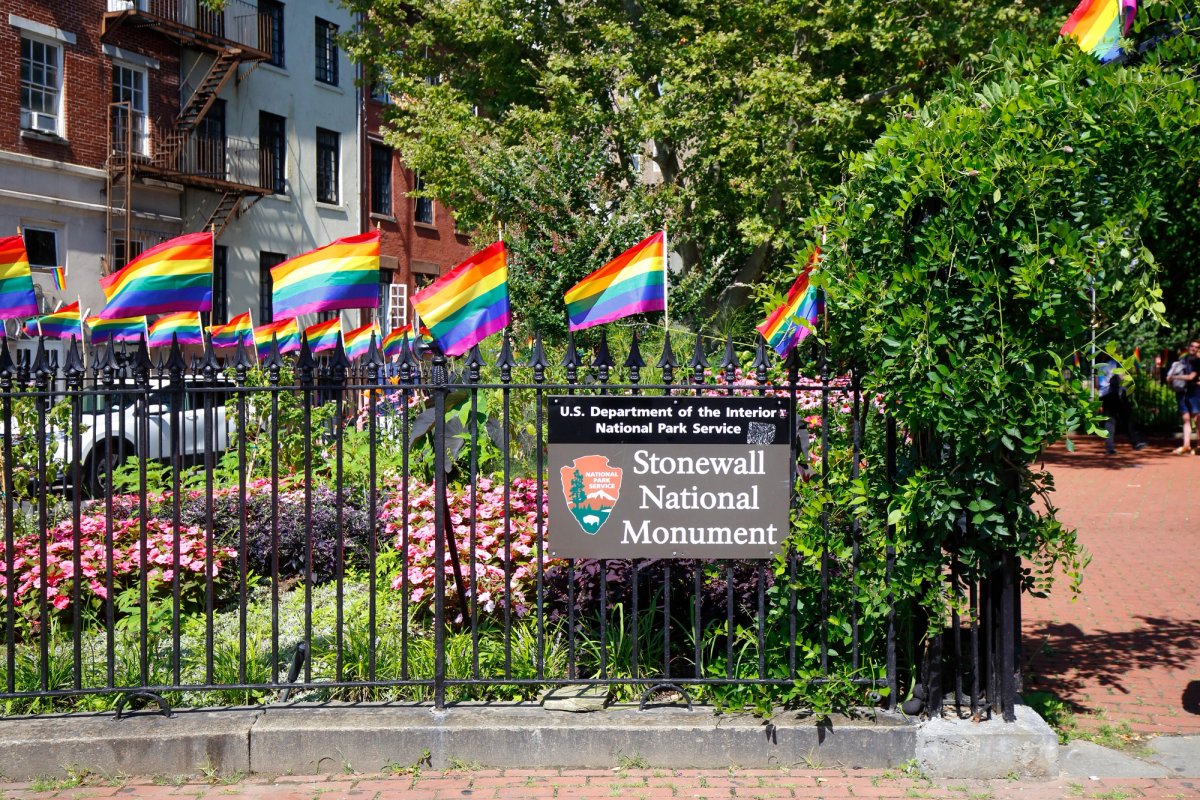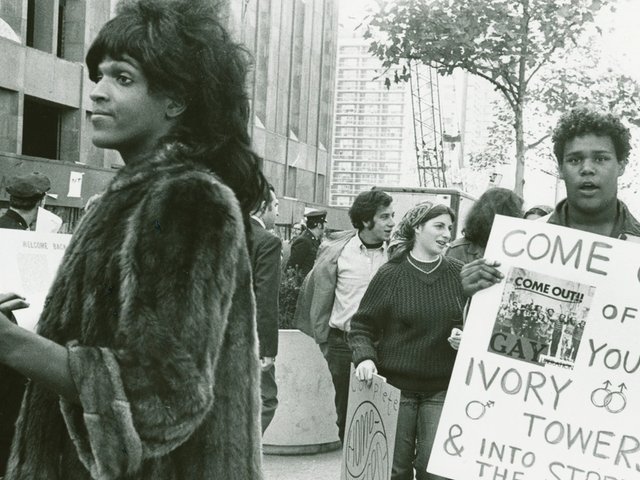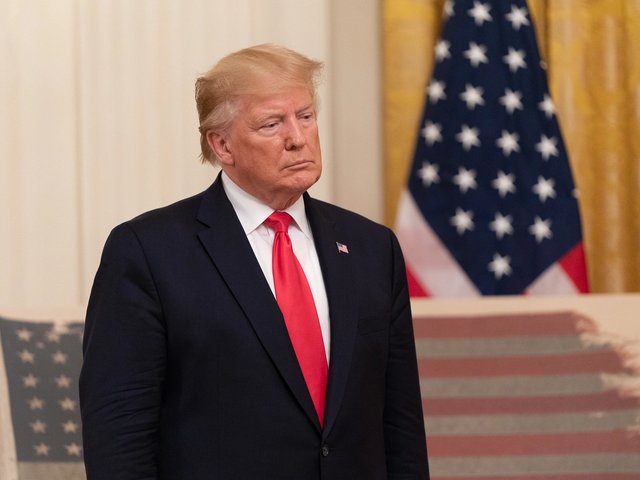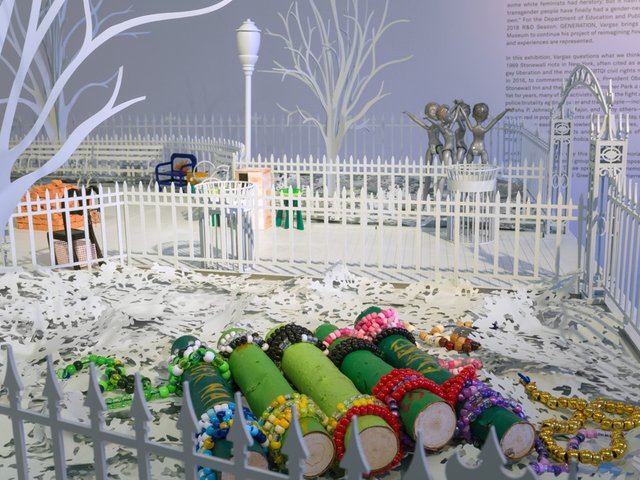The words “transgender” and “queer” were on Thursday removed from a National Park Service (NPS) web page about the Stonewall National Monument, a historic site in New York’s West Village dedicated to the gay rights movement.
The NPS, which oversees the national monument, previously stated on this page that “before the 1960s, almost everything about living openly as a lesbian, gay, bisexual, transgender, or queer (LGBTQ+) person was illegal. The Stonewall Uprising on June 28, 1969 is a milestone in the quest for LGBTQ+ civil rights and provided momentum for a movement.”
The page now only refers to lesbian, gay and bisexual people, and the letters “T” and “Q” have been dropped, along with the “+” symbol. A related page that previously explained the different flags used to celebrate LGBTQ+ identities and groups, such as intersex awareness, non-binary pride and straight allies, as well as the days on which these flags would be flown at the site, has been almost entirely wiped of information.
A further page offering a virtual photography exhibition now describes the Stonewall uprising as “a watershed moment for LGB rights”. Text in the bottom right hand corner of the page confirms that it was last updated on 13 February 2025.
What is The Stonewall National Monument?
The Stonewall National Monument site encompasses 7.7 acres surrounding the Stonewall Inn on Christopher Street, a bar where a police raid in 1969 against gay patrons sparked protests and led to a nation-wide movement for queer rights. Two of the leaders of the revolution were the late Black transgender performer Marsha P. Johnson and the transgender activist, Sylvia Rivera.
A photograph of Rivera on the NPS site was previously captioned: “At a young age Sylvia began fighting for gay and transgender rights while also helping homeless young drag queens, like herself, gay youth, and trans people.” The word “transgender” has since been removed, although the phrase “trans people” remains.
Similarly, a photograph of Zazu Nova, identified by many eyewitnesses as the person who may have thrown the “first brick” at the Stonewall Uprising, previously included a caption that described her as a “black transgender woman”. It now describes her as a “black woman”.
Former US president Barack Obama declared the bar, the adjacent park and streets a national monument in 2016. That same year, it was recognised as a historic site by the State of New York, which installed a plaque outside the inn explaining its history as a locus for “monumental change for lesbian, gay, bisexual, transgender and queer (LGBTQ) Americans”.
The NPS’s move comes as the administration of US president Donald Trump pushes federal agencies to recognise only the male and female genders, deny access to gender-affirming care for young people, and bar transgender athletes from participating in women’s sports.
“This is just cruel and petty,” New York Governor Kathy Hochul said in a statement posted to X. “Transgender people play a critical role in the fight for LGBTQ+ rights—and New York will never allow their contributions to be erased.”
Pride Live, the non-profit organisation that helped to push for the Stonewall Inn to be landmarked and now runs the nearby visitors centre, said in a statement on Instagram: “Our space is inextricably linked with and honors the brave pioneers, especially transgender and gender-nonconforming individuals, who led the Stonewall Rebellion. Independently owned and operated, and 100% supported by donations, we will continue our mission to ensure that every person has access to learn about and see themselves in history.”
A spokesperson for the NPS said changes were made in order to comply with the executive order signed by President Trump titled “Defending Women From Gender Ideology Extremism and Restoring Biological Truth to the Federal Government”. Other government websites, including the US Centers for Disease Control and Prevention (CDC), similarly removed pages that included health information about transgender people.
Diversity, equity and inclusion under Trump
It now appears that the Trump administration is working to rewrite how US history and culture is presented to the American people. Recently, concerns have been rising that NPS pages dedicated to diversity, equity and inclusion, another target of the Trump administration, would be removed. Several such pages were inaccessible at the end of January, including the Stonewall web page.
The Art Newspaper documented at least 20 additional pages, including those about the Japanese American Memorial to Patriotism During World War II, Bainbridge Island Japanese American Exclusion Memorial, and a page on “Transgender History in the US and the Places that Matter”, that showed a “Temporary Server Error (503)” or other loading issues.
Most of these were reinstated by the start of February, but others, including a page outlining a diversity programme at the Grand Canyon National Park, a page explaining “Climate and Health Equity” and a page dedicated to telling the stories of LGBTQ+ rangers in the NPS have either been removed or are marked “Page In-Progress”.
Ellen Sato Faust, the executive director of the association connected to the Bainbridge Island site, said in an email that she immediately reached out to the superintendent of the Seattle Area NPS sites when the earlier loading problems occurred, “but no one was able to provide an explanation for what caused the issue with our page”.
If the “blackout” was deliberate, as it seemed to many on Bluesky, “it was executed very poorly”, Sato Faust said, since related pages about Bainbridge Island, as well as the Minidoka National Historic Site and Manzanar National Historic Site pages, remained accessible. She added that the association and the Japanese American Citizens League in Washington, D.C would continue to monitor the situation.
Eric Muller, a board member of the National Japanese American Memorial Foundation and a legal professional and scholar of Japanese incarceration, said via email that while he was unable to speak for the board about the circumstances around the NPS page, it did concern him. “It’s hard to say how widespread the confusion is about how to handle depictions/interpretations of history” among those employed by the government, he added.
But, linking to a recent instance of apparently mistaken self-censorship at the National Cryptologic Museum, he said: “This sure is worrisome.”






